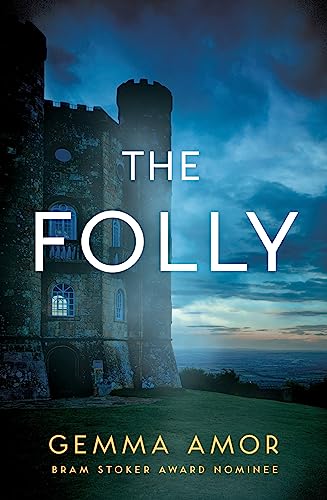
Synopsis:
Morgan always knew her father, Owen, never murdered her mother, and has spent the last six years campaigning for his release from prison. Finally he is set free, but they can no longer live in the house that was last decorated by her mother’s blood. Salvation comes in the form of a tall, dark and notorious decorative granite tower on the Cornish coastline known only as ‘The Folly’. The owner makes them an take care of the Folly, and you can live there. It’s an offer too good to refuse.
At first the Folly is idyllic, but soon a stranger arrives who acts like Morgan’s mother, talks like her mother, and wears her dead mother’s clothes. Is this stranger hell-bent on vengeance, in touch with her restless mother’s spirit itself, or simply just deranged? And, most importantly, what exactly happened the night Morgan’s mother died?
Review:
For almost the first half of Gemma Amor’s new novel, I was convinced that it was not a horror novel at all, but rather a dark psychological study of a family in crisis, dealing with deep trauma, using its environment to focus that trauma and reflect it back. The Folly does all of those things, and it does them with shocking efficiency both of language and plot, but it is also very much a horror novel, and when the turn comes, it’s a kind of quiet masterclass in the uncanny.
Morgan picks up her dad from prison, where they have just successfully overturned his murder conviction. He’s spent the last six years incarcerated for the alleged killing of Morgan’s mother, supposedly having pushed her down the stairs. Morgan never believed this and has worked tirelessly to free him, and it hasn’t come cheap.
Due to these financial considerations, as well as the fact that Dad is now an infamous quasi-celebrity in their hometown, Morgan moves them both out to the Folly, a tower on the Cornish coast that needs a caretaker to keep squatters from damaging it, but mostly to keep obsessives from climbing the tower and throwing themselves off. The Folly, it seems, has a complicated history of its own.
The setting does a great deal of work here, obviously. A gothic structure overlooking the sea, its inner walls circled by a cast iron staircase, isolated from any kind of community, it is the perfect location for Morgan and her father to finally get to the bottom of what happened that night and what it all means.
But the location isn’t the only tool in Amor’s arsenal. Soon, a strange man arrives, speaking in Morgan’s dead mother’s voice, wearing her mother’s apron, repeating the same message over and over.
These repeated scenes of haunting/invasion operate both as a kind of Freudian return of the repressed and as an almost Greek drive toward Morgan’s eventual recognition scene. They are harrowing, uncanny, and genuinely eery, and her father’s transformation in this new location is equally frightening.
Eventually, the plot comes around in a shape not unlike a Greek tragedy. A full-circle revelation that is so satisfying as to seem inevitable. This perfect shape might make the story’s coda a little disappointing, or at least a little unnecessary, but nothing can detract from the assured gothic psychodrama that is The Folly.









Leave a Reply